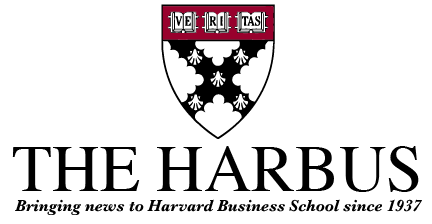
When NBA free agency, a time when professional basketball players whose contracts have run out can sign with other teams, rolls around this coming summer, it will be common to hear of players signing deals paying them millions of dollars to play basketball. Some, like Kevin Durant, can expect to earn upwards of $20M per year. To the average person, these are enormous sums of money, so that person might conclude that athletes are well-paid, and perhaps even overpaid.
So, how is it that professional athletes are, in fact, underpaid?
The first reason is the difficulty of, and relatively low payoff from, becoming a professional athlete. A popular basketball blog, Hoopsvibe.com, estimates that roughly 1 in every 3,300 high school basketball players eventually plays in the NBA, or in a recent graduating class, 48 individuals from a pool of over 160,000 high school graduating players. On top of that, there are individuals who play in leagues outside of high school and aspire to be in the NBA, who are not counted in the 160,000. This level of difficulty, and the odds of talented players successfully entering the NBA, at a minimum, justifies the compensation athletes receive. Sure, everyone knows how difficult it is to be one of the 350 or so players in the NBA, but many do not realize that the payoff for getting to the top is arguably insufficient. Let’s look at some facts for context.
The NBA makes over $5B in revenue per year, and that does not include other basketball-related revenue (e.g., product/brand endorsements, etc.). There are 30 teams in the NBA, each of which Forbes estimates to be worth an average of $1.1B, so the NBA is worth at least $30B in total. Take LeBron James, who has an NBA annual salary of $24M. LeBron will get paid what several CEOs of various mid-sized American companies will make, companies that are worth much less than $30B. Even further, LeBron will continue to generate revenue even after he retires, through media and merchandise, and through the thousands of fans he has generated through his play. That cannot be said about most CEOs of mid-sized American companies. So why is that the case? Well, in a true market, LeBron would be able to take his talents to places that paid him better, but because the NBA only has 30 teams, there is, by definition, limited appetite for LeBron’s services. This fact, in combination with the salary cap system, puts an artificial, below-market ceiling on the compensation that top professional athletes can earn.
Another contributing factor to athletes being underpaid is the duration of an average player’s career. For instance, the average playing career length for NFL players is 3.5 years, and NFL players on average earned $1.7M in 2015. This implies that on average, an NFL player earns about $6M over the course of a career – compare that to the average MBA across America, who earns $3-4M over the course of a career. Of course, making it to the NFL is significantly harder than obtaining an MBA from the average American school, not to mention the frequent injuries that football players face that affect both their careers and life expectancies. Furthermore, many athletes suffer from poor money management skills, as was covered in ESPN’s documentary, “Broke,” because of limited financial education and the influence of family members, friends and agents who often just want to earn their share from an athlete’s professional career without helping the athlete achieve long-term financial stability. As a result, players are unable to stretch the fruits of their earnings over many years. Lucrative, post-career opportunities, such as those in team management or sports broadcasting, are available only to a few individuals, so the commonly held assumption that athletes make millions even after playing is false. In sum, when career span is taken into account, it is clear that athletes are severely underpaid, especially in the context of billionaire team owners that reap immense profits from football team operations each year.
One recourse for athletes when it comes to pay is equity participation. Today, very few, if any, athletes receive equity stakes in the teams that they play for. Even Michael Jordan did not receive any ownership in the Chicago Bulls. The lack of equity participation for athletes has led to professional sports team owners disproportionately capturing the upside associated with running a team. In the most recent lockout in the NBA, owners complained about athlete pay, citing that nearly half of all the franchises had recorded operating losses even though player pay had steadily risen. The owners omitted one key fact, however: almost all of the financial gain that a team’s ownership will see over the course of several years will come from the appreciation of that team’s equity, regardless of whether the team performs better. This is due to several reasons, including the fact that teams are trophy assets and have inherent scarcity value.
Take the Golden State Warriors for example, the team was purchased in 2010 for a then-record $450M, but is reported to be worth over $1.3B today. While the Warriors players certainly participated in the ongoing cash flow generated by the business, by getting paid salaries and bonuses, they did not receive any of the almost $1B gain that came from appreciation of the team’s equity. Since the concept of equity participation for employees is not new in the world of business, it begs the question of why such compensation schemes have not made their way to professional sports leagues yet. Various players’ associations and unions will do well by adding player equity compensation as a key negotiating issue during the next collective bargaining agreement discussions, and in turn, hopefully be able to secure the kind of pay that professional athletes deserve.
Akash Pradhan ( HBS ’17) contributes sports business and economics articles to the Harbus. Before HBS, Akash worked at TPG Capital in San Francisco and The Raine Group in New York. Akash is originally from the Bay Area.

Established in 1937, The Harbus News Corporation is the independent student news publisher of Harvard Business School.


